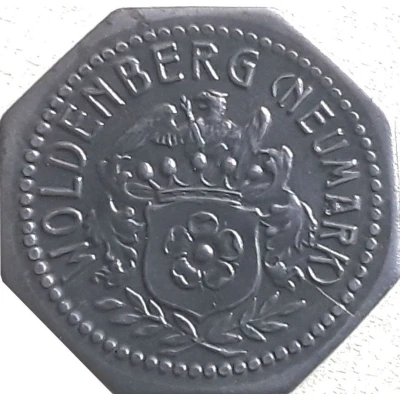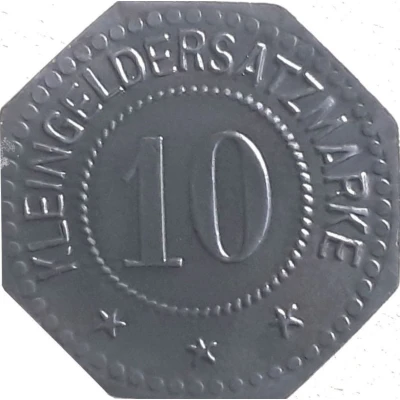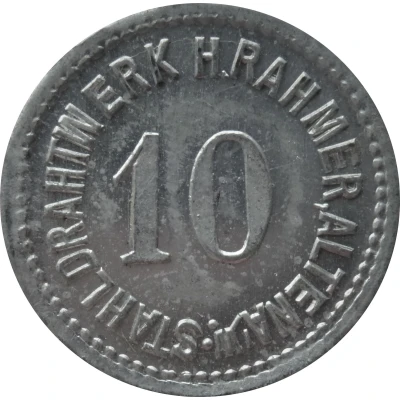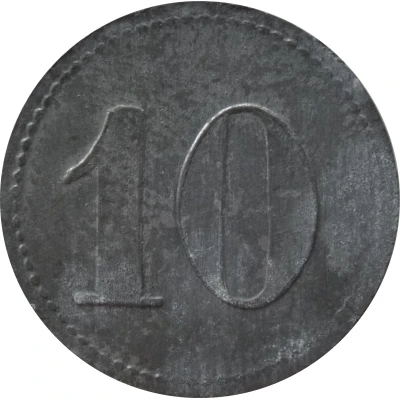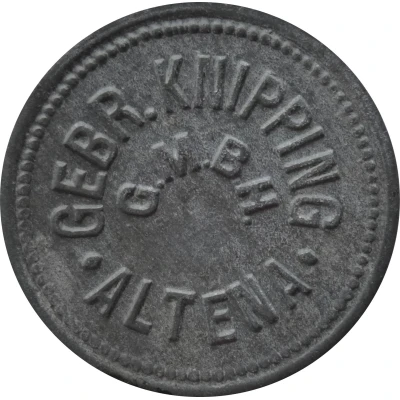
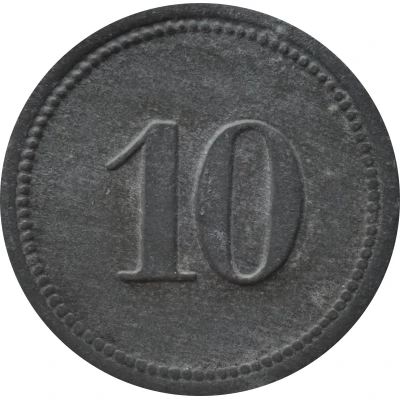

© Willem63 (CC BY-NC-SA)
10 Pfennigs - Altena (Gebr. Knipping G.M.B.H) ND
| Zinc | 1.9 g | 19.8 mm |
| Issuer | German notgeld (Germany) |
|---|---|
| Type | Standard circulation coin |
| Value | 10 Pfennigs (10 Pfennige) (0.10) |
| Currency | Mark (1914-1924) |
| Composition | Zinc |
| Weight | 1.9 g |
| Diameter | 19.8 mm |
| Thickness | 1.2 mm |
| Shape | Round |
| Technique | Milled |
| Orientation | Medal alignment ↑↑ |
| Demonetized | Yes |
| Updated | 2024-10-04 |
| Numista | N#323849 |
|---|---|
| Rarity index | 97% |
Reverse
Pearl rim, with denomination centered
Script: Latin
Lettering: 10
Edge
Plain
Comment
Menzel: BBBFa: Nietenfabrik
Interesting fact
One interesting fact about the 10 Pfennigs - Altena (Gebr. Knipping G.M.B.H) ND coin from German notgeld (Germany) made of Zinc weighing 1.9 g is that it was issued during a time of economic crisis in Germany, specifically during the hyperinflation period of the 1920s. The coin was part of a series of emergency currency issued by local governments and private companies to address the shortage of small change during this time. The coin's design features the image of a castle, which is a common motif in German notgeld coins, and its zinc composition was a common material used for coins during this period due to its low cost and durability.
